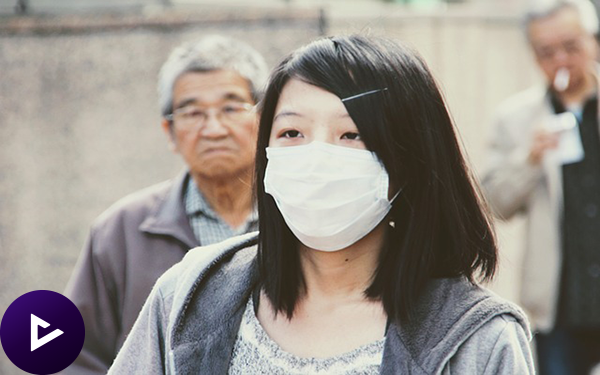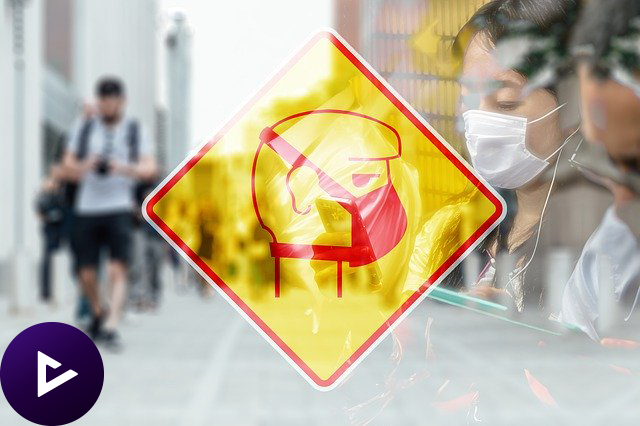
Introduction
With the coronavirus spreading to more than 20 countries, people are getting nervous about the possibility of a global pandemic(1). It is believed that the coronavirus originated in a wet market in the city of Wuhan in southeast China, though there may be some evidence that suggests that China has been researching coronaviruses in secret biological weapons programs.
SARS was also a coronavirus and caused global panic from 2002 to 2004. Though it affected mostly China and Hong Kong, there were cases in 29 different countries. On the bright side, no cases of SARS have been discovered since 2004, and Chinese scientists have traced the disease to civets and horseshoe bats living in Yunnan Province.
What is Coronavirus?
Viruses aren’t diseases, though they can cause disease. Viruses are microscopic(2) parasites that cannot survive on their own. They need to find a host—plant, animal, or person—to invade in order to survive.
The name corona refers to the color around an object like a star or the sun. It can look like a crown or a circle of light. The coronavirus family also has these shapes around the virus particles. Coronaviruses are a family of viruses that jump from animals to people. The wet market in Wuhan had an array of live and dead animals for sale that allegedly(3) included chickens, pigs, snakes, civets, wolves, fish, shrimp, etc.

Chinese Response
With SARS, the Chinese government downplayed(4) the disease for the first few months. China offered very limited information to the rest of the world, and the government even banned newspapers from reporting about the disease. In Guangdong, where the virus originated, The government and local authorities were worried about an impact on the province’s projected GDP growth rate of 12.2%. However, residents saw that it was very serious and spreading quickly.
The first case of SARS occurred in November 2002, but China didn’t notify the WHO about the dangerous and contagious(5) outbreak until February 2003. Global economic losses due to SARS were estimated at about 40 billion dollars in 2003.
With the coronavirus, the first case was diagnosed on Dec. 31, and the WHO was immediately informed. By January, Chinese scientists had shared the genetic makeup(6) of the virus with the rest of the world. On top of that, China has locked down about 20 million people in Wuhan and neighboring cities. Nevertheless, people are still scared, and some still think the number of infections and deaths might be a lot higher than official reports. China seems determined to not repeat the same mistakes they made with SARS, but it’s still a little too early to assess the situation as a whole. And as usual, there is still a potential disparity(7) between government statements and actual events.
Death Rates
SARS infected 8,096 people, killing 774 of them. The symptoms escalated from flu to pneumonia very quickly in many cases, and the death rate was 9.6% globally. Among the dead, 648 were located in China and Hong Kong. Still, there were 37 fatalities in Taiwan, 43 in Canada, and 33 in Singapore. (Some other countries had death tolls in the single digits.)
The new coronavirus has infected 7,814 people so far. The good news is that the death rate is lower than that of SARS (currently sitting at 3%). As of yet, nobody outside of China has died from the virus, but the disease currently has no vaccine and is still spreading.
China’s Knockoff Paris—Can You Spot the Differences?
Conclusion
The similarities and differences between SARS and the Wuhan coronaviruses–and China’s responses in each case–are certainly interesting and important to understand in order to overcome the current outbreak. They also give us a glimpse(8) into what a future virus originating in China might look like and how the world can better coordinate against it.
It’s scary how fast these viruses can spread in the 21st century thanks to globalization(9), the affordability of flying, and just how many people are traveling each and every day. The best thing we can do is educate ourselves, wash our hands, avoid high-volume areas when possible, and try to stay healthy. Hopefully, the coronavirus will soon pass and the world will be better able to defend against future outbreaks.

Vocabulary
1. pandemic (n.)
Def. a disease that spreads over a whole country or the whole world
Ex. The SARS pandemic started in 2002 and ended in 2004.
2. microscopic (adj.)
Def. extremely small and difficult or impossible to see without a microscope
Ex. The microscopic organism lived in the water that we were all drinking.
3. alleged (adj.)
Def. stated as a fact but without any proof
Ex. The alleged killer used a knife to kill his victims.
4. downplay (v.)
Def. to try to make something seem less important than it really is
Ex. He is so modest. He always downplays his musical abilities.
5. contagious (adj.)
Def. a contagious disease spreads by close contact between people
Ex. The flu is contagious, so you should get a vaccine every year.
6. makeup (n.)
Def. the different things, people, etc. that combine to form something; the way in which they combine
Ex. The genetic makeup of the new virus hasn’t been discovered yet.
7. disparity (n.)
Def. a difference, especially one connected with unfair treatment
Ex. The disparity between the rich and the poor is getting bigger and bigger.
8. glimpse (n.)
Def. a sight of somebody/something for a very short time, when you do not see the person or thing completely
Ex. I just caught a glimpse of the most beautiful girl in the world, but she disappeared in the crowd. Darn!
9. globalization (n.)
Def. the fact that different cultures and economic systems around the world are becoming connected and similar to each other because of the influence of large multinational companies and of improved communication
Ex. The Internet has been one of the largest factors in globalization.
Sources
https://www.centerforsecuritypolicy.org/2020/01/27/did-wuhan-coronavirus-escape-from-a-lab-in-china/
https://www.businessinsider.com/china-wuhan-coronavirus-compared-to-sars-2020-1
https://www.pymnts.com/news/international/2020/coronavirus-economic-growth-impact/
Photos
flu outlook by Matthias Miller
mask-protection-sars-mouth-guar by Peggy_Marco
illustrations/mouth-guard by geralt
